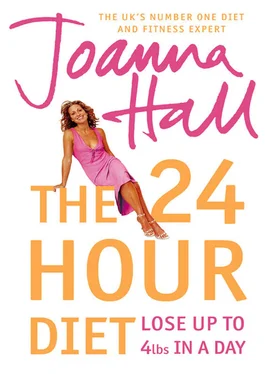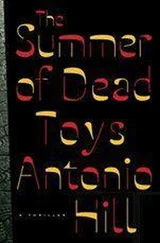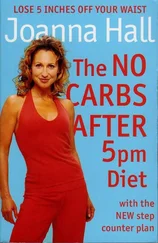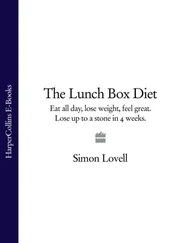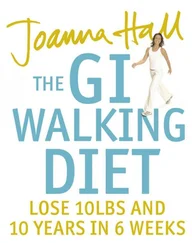Try to drink at least 2 litres of water throughout the day.
Herbal teas are unlimited but please don’t replace the morning and afternoon Body Cleanse Elixir. I have found the Dr Stuart’s range to be the best.
Once you have completed your 24 Hour Diet there are a number of ways to continue feeling fabulous:
• You can complete the Three-day Cleanse (below).
• You can do the 20-day Follow-on Plan in Part 2 to continue Losing weight and inches.
• You may feel confident enough to go straight to Part 3, ‘Keeping the Weight Off’.
This is a great way to continue the good work. Your stomach may have already shrunk a little, and the Three-day Cleanse is a great way to lead out of your 24 Hour Diet. You’ll now have all the ingredients you need. Plus, of course, you get the added benefit of consolidating your inch and weight loss.
Alternatively, you may decide to go straight into the Three-day Cleanse without doing the 24 Hour Diet first. It’s a great way to shake off the body doldrums from the inside out; a super-simple, non-fasting approach to giving your body a spring cleanse.
You can expect visible results when you follow the Three-day Cleanse. Remember to drink plenty of water, little and often. Complete your yoga postures (see page 14) and between 6,000 and 12,000 steps or 40 minutes of brisk walking split into two 20-minute bouts.
The lunches and dinners can be swapped around for convenience. The programme can also be adapted to include meat and fish. For example, you may wish to top your Vitality Soup with some cottage cheese or perhaps a small tin of flaked tuna, rich in the omega-3 essential fats. Alternatively, for your evening meal try wafer-thin chicken or veal escalopes marinated in a little olive oil, sage and fresh rosemary, and then grilled. Or try a steamed skate wing with fresh parsley, a little extra virgin olive oil and small knob of butter with your fresh vegetables. It will be ready in minutes. Salmon and mackerel steaks work really well too, or if your taste buds are less keen on oily fish, try baked cod, haddock or plaice wrapped in foil with some olive oil, fresh dill and chives.

Another benefit of the 24 Hour Diet and Three-day Cleanse is that they help us break some habits. We are all creatures of habit with familiar patterns of eating, moving, resting, thinking and feeling. These habits aren’t necessarily the best for our wellbeing, but it’s easy to lose sight of what it’s actually like to have more energy. The diet and cleanse may create an opportunity to see things from a new perspective. By following the diet you will be challenging those bad habits, helping you set a standard for a healthier, more balanced approach to your weight loss.
So if you are ready to start forming some new habits to help you achieve a more balanced approach to a healthy body weight, let’s move on to Part 2, the 20-day Follow-on Plan.
PART 2 THE 20-DAY FOLLOW-ON PLAN
In this section I’ll introduce you to the 20 rules that will help you achieve your weight loss and keep it off. You’ll also find 10 highly effective weight-loss plans.
Each of these 20 rules represents a small change. Taking small steps may sound a long way round to getting your weight off but research supports this approach. Implementing the rules in a gradual way to change our habits has been shown to be effective and achievable, and to create a lasting change in our behaviour. The psychologist, Steve Biddulph, has described this as the ‘five-per-cent rule’. Here the rules are about helping you make positive changes for your health and weight; taking one small action at a time.
Each of the rules is supported by a series of ‘habits to groove’ and ‘habits to ditch’. Habit grooving is about the small actions you can take to help strengthen each of the rules. Habit ditching is about minimizing the small actions or cues that may be destructive to fulfilling each of the rules. By applying the rules with habit grooving and habit ditching you will be far more likely to be healthier, fitter and trimmer in the short and long-term.
To apply the rules successfully you need to be motivated to make a change. The rules can’t just take care of themselves; you do need to be prepared to put in a little effort. But in each of the 10 specially designed weight-loss plans in this section I’ve made it really simple for you to apply the rules highly effectively. All you have to do is introduce the rules one at a time. You’ll be losing weight and boosting your health while taking small, effective steps to achieving that weight loss and keeping it off.
This approach – setting a specific habit to groove, telling you why each rule will be beneficial, and offering you a support system to help reinforce the new behaviour – has been shown to be one of the most successful approaches. So when you start any of the weight-loss plans you can feel confident you are following a tried-and-tested method designed for you to succeed.
Before we begin, we need to understand a little about habits: what they are, how they are formed and how we learn new behaviours. This involves looking at how our brains work.
Like it or not we all have habits, little things we do on a regular basis. In terms of our health and weight, some of these may be positive and others not so positive. If you’re going to make an impact on your weight loss and improve your health, there are some new habits you’ll need to develop and groove and others you may need to ditch.
A habit is a series of automatic behaviours in response to a specific cue. This may sound a bit of a mouthful but in real terms a habit is behaviour we have got used to doing as part of our regular life. For example:
• At 8 a.m. you walk to your car and drive yourself to work.
• You stop at the coffee shop on the way to the office and automatically order a particular drink and something to eat; perhaps it’s a venti latte and pain au chocolate.
• You always stop at the same newsagents to buy your paper and something to snack on.
• You automatically say ‘Yes’ to the doughnuts that get passed around the office at 11 a.m.
• A hunger pang in the afternoon makes you grab that chocolate bar or bag of crisps.
• It’s a colleague’s birthday and the first response is to arrange a box of chocolates.
• You have had a bad day at work so you devour the whole tub of ice cream after dinner without drawing breath.
We each have our own little habits – some of the above examples may be applicable to you while others may not – but a habit becomes so familiar it’s almost like tunnel vision. We just don’t seem to see or think beyond our existing actions. Behavioural scientists explain that habitual acts are an immediate response to a variety of specific cues to which we are constantly exposed. These cues can be either external or internal. External cues can be:
• Walking past a vending machine, prompting you to crave chocolate.
• Meeting your best friend who you always have Lots of wine and nibbles with.
• Going to your favourite Chinese or Indian restaurant where you know you always order excessively.
• Seeing the kids eat their afternoon tea.
Internal cues are things like hunger and pain. They tend to be true physiological messages from our bodies or reactions to our own feelings such as stress, anger, depression, joy or sorrow. Whether the cue is internal or external, we can respond without purposeful thinking or reflection, and often without any sense of awareness. So much so that before we know it we’ve done it again and again, grooving the habit so it gets stronger and stronger.
Читать дальше
